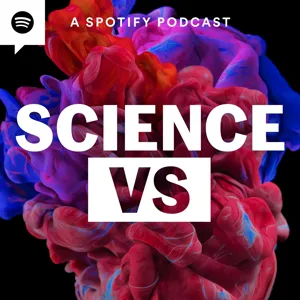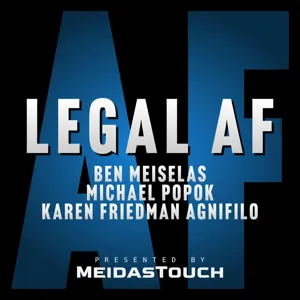Podcast Summary
Exploring potential solutions to prevent mass shootings: Scientific evidence plays a crucial role in determining effective methods to prevent mass shootings, with mixed results from assault weapon bans, potential risks of armed individuals in public places, complex relationship between mental health and shootings, and promising results from red flag laws.
When it comes to preventing mass shootings, the debate often focuses on political ideologies, but there's a lack of consideration for scientific evidence. In today's episode of Science Versus, host Rose Rimmler explores this issue by examining four potential solutions: banning assault weapons, increasing the presence of armed individuals in public places, addressing mental health, and implementing red flag laws. While mass shootings are rare compared to other crimes, they have become deadlier in recent years, leading some to argue that access to assault weapons is a significant contributing factor. However, the scientific evidence on the effectiveness of assault weapon bans is mixed. Another solution is increasing the presence of armed individuals in public places to prevent shootings, but research suggests that this approach may not be effective and could even increase the risk of violence. Addressing mental health is also a common suggestion, but the relationship between mental illness and mass shootings is complex and not fully understood. Lastly, red flag laws, which allow authorities to temporarily confiscate firearms from individuals deemed a risk to themselves or others, have shown some promise in reducing the number of mass shootings. Ultimately, the most effective approach to preventing mass shootings may involve a combination of these solutions, informed by scientific evidence.
Debate over assault weapons: Definition and Danger: The debate over assault weapons centers around their resemblance to military-grade rifles and potential for mass harm, despite their classification as modern sporting rifles in some contexts.
The debate over assault weapons in the United States revolves around their definition and perceived danger. During a visit to a gun range in Virginia, where assault weapons are legal, I had the opportunity to handle an AR-15 style rifle, which is a modern sporting rifle according to Mark Oliva, a spokesperson for the National Shooting Sports Foundation. Despite its intimidating appearance, Mark taught me how to use it safely and effectively. However, the controversy surrounding these weapons stems from their resemblance to military-grade assault rifles and their potential for causing mass harm in the wrong hands. President Biden aims to ban assault weapons federally, but the issue remains contentious due to differing perspectives on their necessity and danger.
Assault Weapons vs Handguns in Mass Shootings: Research indicates mass shooters often use handguns, and the effectiveness of assault weapon bans is mixed. Some features were banned for political reasons, and high capacity magazines may be a more significant factor.
The distinction between assault weapons and handguns, in terms of their impact on mass shootings, may not be as clear-cut as it seems. During a shooting experience, the speaker found both weapons to be easy to use due to their semi-automatic nature. However, research indicates that mass shooters often use handguns rather than assault weapons, and the evidence on the effectiveness of assault weapon bans is mixed. Professor Mark Guise from Quinnipiac University explains that some features of assault weapons were banned for political reasons rather than safety concerns. Additionally, the laws do not require people to turn in their existing assault weapons, leading to a large number of these guns in circulation. While assault weapons have been used in some mass shootings, research suggests that high capacity magazines, which can hold a large number of bullets, may be a more significant factor. The US has approximately 400 million guns, with around 20 million being assault rifles.
Large capacity magazines in mass shootings lead to more injuries and fatalities: Research suggests banning or confiscating large capacity magazines or stricter gun control could reduce mass shooting fatalities, but political feasibility is uncertain. Armed guards on campus might unintentionally increase casualties. Considering other measures like gun licensing and reason checks could be effective.
The use of large capacity magazines in mass shootings can lead to significantly more injuries and fatalities. Research indicates that banning and confiscating these magazines or implementing stricter gun control laws could potentially reduce the deadliness of mass shootings. However, the political feasibility of such measures in the U.S. is questionable. A study on school shootings revealed that having an armed guard on campus during a shooting incident may unfortunately result in more casualties, contrary to the belief that a "good guy with a gun" can stop a "bad guy with a gun." Instead, other measures such as requiring licenses to own guns and proving a valid reason for ownership, which have been successful in countries like Australia, could be considered.
No clear-cut solution to preventing mass shootings: Despite ongoing research, there's no definitive evidence that armed officers or armed teachers prevent mass shootings, and addressing mental illness alone won't stop these tragedies.
There is no clear-cut solution to preventing mass shootings based on the current research. A study by Jillian Peterson and her team found that the presence of armed officers on school campuses does not necessarily deter mass shootings, and there is no definitive evidence that arming teachers would be effective or desirable. Furthermore, the majority of teachers surveyed expressed reluctance to carrying guns in the classroom. The issue of mental illness being a significant factor in mass shootings is widely acknowledged, but there is no conclusive evidence that addressing mental illness alone would stop these tragedies. While it's important to continue researching potential solutions, it's essential to approach the issue with a nuanced understanding that no single solution will provide a complete answer.
Approximately 11% of mass shooters are psychotic, but 70% were suicidal.: Most mass shooters are not primarily psychotic, but rather suicidal, making suicide prevention crucial.
While a significant minority of mass shooters exhibit psychotic symptoms, the majority are driven by suicidal ideation. Jillian's research, based on interviews with various sources including living mass shooters, reveals that approximately 11% of these perpetrators are primarily motivated by psychosis. However, around 70% of them were suicidal, making the likelihood of death by suicide after the crime much higher than for other types of murderers. To commit a mass shooting, an individual must be fully committed to it being their final act, which requires a high level of hopelessness and suicidal thoughts. This finding challenges the common perception that mass shooters are all mentally ill and reinforces the importance of addressing suicide prevention.
Understanding Mass Shootings as a Form of Suicide: Mass shootings may be a form of suicide for some, requiring mental health interventions and media responsibility to prevent tragedies.
Many mass shooters exhibit suicidal tendencies, making suicide prevention a potential approach to address this complex issue. While not all shooters can be identified based on mental health diagnoses, understanding mass shootings as a form of suicide might help us intervene before crisis points. Some shooters may seek infamy after death, using mass shootings as a means to gain attention and inspire copycats. Therefore, media coverage should be handled with care to avoid inadvertently promoting their agendas. Ultimately, addressing mental health care, reaching out to those in crisis, and altering the cultural narrative around mass shooters could be crucial steps in preventing these tragedies.
Media coverage of mass shootings and suicides: Media can limit coverage of shooter's name, picture, and manifesto to reduce copycat effect. Red flag laws can prevent suicides and potential mass shootings by temporarily removing firearms from individuals making threats.
Media reporting on mass shootings and suicides can have a significant impact. Studies have shown that the copycat effect is real, with suicides increasing after celebrity suicides are reported in detail. The media can help reduce this effect by limiting coverage of the shooter's name, picture, and manifesto. Additionally, red flag laws are gaining support as a potential solution to prevent mass shootings. These laws allow for the temporary removal of firearms from individuals making threats, and have been shown to prevent suicides by gun. California, which passed its red flag law in 2014, estimates that for every 10-20 times the law is invoked, one suicide is prevented. While more research is needed on their effectiveness for mass shootings, a study found that out of 200 cases in California where a red flag law was triggered, 58 involved individuals making threats of mass shootings.
Red flag laws can prevent mass shootings by confiscating firearms from individuals deemed a threat: Red flag laws can potentially save lives by removing firearms from those exhibiting warning signs before mass shootings, but awareness and education are crucial for their effectiveness.
Red flag laws, which allow authorities to confiscate firearms from individuals deemed a threat to themselves or others, can potentially prevent mass shootings. This is because a significant number of mass shooters exhibit warning signs before their attacks. According to research, about half of mass shooters have made threats or revealed their plans beforehand. However, for these laws to be effective, people need to be aware of them. A survey found that two-thirds of Californians had never heard of their state's red flag law. To increase awareness, it would be beneficial to educate those who work with individuals in crisis, such as school counselors and ER doctors. While there are still many unknowns, such as how different states' versions of the laws will fare and the overall impact on mass shootings, the initial research is promising. Other potential solutions to prevent mass shootings, such as banning assault weapons or arming more people, have their merits but also come with challenges.
Layering multiple solutions to prevent mass shootings: Mental illness is a factor for many mass shooters, but it's not a reliable predictor. Red flag laws may help, but their effectiveness is uncertain. The best approach might be to combine multiple imperfect solutions to cover all the holes.
There is no single solution to preventing mass shootings in the US. Mental illness is a factor for many mass shooters, but it cannot be used as a predictor. Red flag laws may help, but their effectiveness is still uncertain. The best approach might be to layer multiple imperfect solutions on top of each other, like slices of Swiss cheese, to cover up all the holes. If you or someone you know needs mental health help, resources are available in the US by calling or texting 988. For more information and related episodes, check out the show notes. This week's episode had 122 citations, and it was produced by a team including Rose Rimmler, Disha Bagat, Meryl Horn, Michelle Dane, Blythe Terrell, Caitlin Kenny, Nicole Bibsterboer, Wendy Zuckerman, Erica Akiko Howard, Bumi Hidaka, Emma Munger, Bobby Lord, Peter Leonard, Adam Langford, Cassandra Carfassi, Emma Friedel, Emmy Betts, Jackie Childkrau, Caitlin Boyle, Paul Reaping, Rosanna Smart, Sonali Rajan, Tristan Bridges, Tara Tober, and Jack Weinstein.






